Celebrating New PhDs During 2019-20
July 31, 2020
Please join us in welcoming over 20 newly minted Ph.D.s!
During the 2019-20 academic year, a number of Jackson School of Geosciences graduate students successfully defended their dissertations. Kudos to Reetam Biswas, Alissa Jeanne Kotowski, Weiran Liu, Pamela Ann Speciale, John Marshall Swartz, Murat Taner Tamer, Janaki Vamaraju, Stephen Ferencz, Suyu Fu, Allison Lawman, Li Liu, Yunzhi Shi, Gabriel Tagliaro, David Guo Tang, Kelly David Thomson, Charles Withnell, Thomas Etzel, Lingchen Li, Chelsea Mackaman-Lofland, Peter Nelson, and Xian Wu.
 Reetam Biswas
Reetam Biswas
Advanced methods for subsurface velocity estimation: trans-dimensional inversion and machine learning.
The project, defended in Fall 2019, was supervised by Dr. Adrien Arnulf and Dr. Mrinal Sen with additional committee members including Drs. Kyle Spikes, Stephen Grand, and Nicholas Bennett.
Abstract: Inversion is a widely adopted tool to estimate the subsurface elastic properties of the Earth from seismic data. However, it faces several obstacles due to lack of adequate data coverage, and various assumptions made in forward modeling and inversion algorithms resulting often in sub-optimal results. One such assumption is the choice of parameterization of the model. In general, it is assumed to be known a priori and kept fixed. This can lead to either over or under parameterization, causing either overfitting or underfitting the data. In the first part of my thesis, I address the problem of model parameterization. Along with searching for models that fit the data, I also solve for the optimum number of model parameters required as dictated by the data. In a deterministic approach, I use the Basis Pursuit Inversion (BPI), which imposes sparsity in the model parameterization by adding a regularization term of L₁ norm of the model vector. The weight of the regularization term plays a dominant role, and I propose an approach for automatic calculation of this weighting factor. Alternately, I also develop a stochastic method, using Bayesian framework to solve my inverse problem in which the model parameters are treated as unknown. Unlike BPI, this method also provides us with estimates of uncertainty. Here, I make use of the Reversible Jump Markov Chain Monte Carlo (RJMCMC) framework, which allows changing the number of model parameters. However, the conventional RJMCMC is generally very slow as it attempts to sample a variable dimensional model space. To address this, I propose a new method called the Reversible Jump Hamiltonian Monte Carlo (RJHMC), which improves the efficiency by combining RJMCMC with a gradient-based Hamiltonian Monte Carlo (HMC). The gradient-based steps ensure quick convergence by allowing the sampling to take large steps guided by the gradient instead of complete random steps. I represent my model space using a layer-based earth model for the 1D problem and using an adaptive ensemble of nuclei along with Voronoi partition for a 2D problem. Subsequently, I use the method to solve the deconvolution problem in 1D, and tomography and Full Waveform Inversion problems in a 2D setting. It also provides estimates of the elastic parameters and marginal distribution of the number of model parameters. I use the 1D RJHMC to estimate density, along with P- and Swave velocities from a pre-stack angle gather. The region contains paleo-residual gas (PRG), which shows same signature as that of normal gas saturation, and can be better differentiated using density. Additionally, I applied trans-dimensional tomography to invert for P-wave velocity structure at an Axial Seamount, which is one of the most volcanically active regions in northeastern Pacific. In addition to BPI and RJMHC, I develop workflows, which take advantage of the hybrid schemes and Machine Learning (ML) algorithms. Solving an elastic FWI problem can be challenging, as it is very computationally expensive in comparison to the more commonly used acoustic formulation. I propose a hybrid scheme, where the initial P-wave velocity result from an acoustic FWI can be used to perform less expensive pre-stack Amplitude vs. Angle (AVA) inversion. This provides us with all three elastic parameters: P-wave velocity, S-wave velocity, and Density. Several inverse problems can be mapped into a neural network architecture, which can be solved using the currently developed deep learning algorithms. The last part of my dissertation describes two machine learning (ML) algorithms that I have developed for seismic inversion. I use a Convolutional Neural Network (CNN) to perform seismic inversion, in which instead of using the traditional way of using input-output pairs to train the network, I use the physics of the forward wave-propagation to guide the training. It circumvents the need for providing the label data during training and makes it unsupervised. In addition to this, I propose to use a Recurrent Neural Network (RNN) to estimate NMO velocities, which is a basic seismic processing technique. Generally, the NMO velocity is hand-picked and requires a lot of human intervention and computation time. Using this workflow with only 10% of data used as training, the network estimates NMO velocities almost instantly for the rest of the dataset.
 Alissa Jeanne Kotowski
Alissa Jeanne Kotowski
Structural and rheological evolution of subduction interface shear zones : insights from exhumed rocks
The project, defended in Fall 2019, was supervised by Dr. Whitney M. Behr and Dr. Daniel Stockli with additional committee members including Drs. Mark Cloos, Jaime Barnes, Konstantinos Soukis, and Laura Wallace.
Abstract: The subduction interface is an inherently heterogeneous distributed shear zone occupying the boundary between a down-going (i.e., subducting) plate and overriding crust and mantle. The sinking of cold, dense oceanic lithosphere creates a slab pull force, which is a driving force for Plate Tectonics. Interface rheology (i.e., deformation or flow) exerts a first-order control on plate boundary strength, seismic style, and the propensity for rocks to exhume, or return to the surface of the Earth from mantle depths. When subducted rocks are exhumed, they provide rare snapshots of the rheological behavior of these complex plate boundary shear zones, and how rocks are subsequently modified by brittle and semi-brittle processes in the upper crust. In this dissertation, I combine a variety of observational and analytical techniques to investigate exhumed subduction-type rocks from Syros Island (Cyclades, Greece) and the sub-ophiolite metamorphic sole in Oman. This work provides constraints on the rheological behavior of subduction plate boundary shear zones, to better inform geodynamic models and to contextualize geophysical observations of active subduction zones. Rheological heterogeneities (i.e., outcrop- to regional-scale features producing strain gradients and/or significant differences in deformation mode or mechanism) are thought to be directly related to the seismic style that occurs along the subduction interface. At relevant depth and temperature conditions for Syros (~50-60 km, 500°C), the important seismic style is an enigmatic, coupled seismic-aseismic phenomena deemed Episodic Tremor and Slow Slip (ETS). ETS involves accelerated – but aseismic – slip over ~10’s-100’s km² of the interface, in conjunction with swarms of micro-seismicity, or tremor, and seems to occur nearly ubiquitously in subduction zones regardless of thermal structure, predicted depths of metamorphic dehydration reactions, or subducting rock type. In Chapter 2, I use exhumed blueschist- and greenschist-facies rocks on Syros to characterize the length scales, types, sources, and deformation mechanisms of rheological heterogeneities that occupy the deep subduction interface, and how they may contribute to enigmatic seismicity like ETS. Partial eclogitization of subducting rocks sets up stark rheological contrast across shear zones, which results in coupled brittle-viscous behavior assisted by near-lithostatic pore fluid pressures. Geologic observations are consistent with a mechanical model of ETS in which the deep interface comprises transiently brittle, potentially tremorgenic sub-patches, within a larger viscously creeping interface patch. These observations scale appropriately with geophysical constraints of tremor source areas and seismic moments. During a subduction-exhumation cycle, the length scales of mixing along the interface, maximum pressures (i.e., depths) that rocks reach, and mechanisms of rock exhumation depend in part on interface rheology. In Chapters 3 and 4, I combine structural and microstructural analysis, novel techniques in thermobarometry, and new interpretation of published metamorphic geochronology on Syros to understand bulk interface deformational style, progressive metamorphism, and rheology. The results are all consistent with a model of coherent subduction and underplating (i.e., transfer of subducting material to the overriding forearc), as opposed to large-scale, chaotic mixing in a mega-mélange. Exhumation of rocks on Syros occurred nearly entirely by buoyancy- and viscosity-driven subduction channel return flow, which accommodated vertical translations of ~40 km from peak depths (60 km) to the middle-lower crust. These inferences are consistent with calculated estimates of shear zone viscosity, and the balance between buoyancy forces and shear tractions at peak subduction depths. While exhumation mechanisms and mechanical behavior of thermally mature subduction zones are particularly important to an understanding of subduction tectonics, subduction initiation is even more enigmatic and poorly understood. The only geologic record of rocks deformed and metamorphosed in infant subduction zones are present as tectonic slivers beneath the world’s ophiolite sequences, deemed metamorphic soles. In Chapter 5, I investigate the structural and petrologic signatures of subduction, return flow, and ophiolite emplacement in a 100 m section of ”low-temperature” metamorphic sole acquired during Phase I of the Oman Drilling Project (Site BT-1B). The ”low-temperature” sole rocks acted as a mechanically coherent slice preserving various evidence for subduction and return flow prior to obduction. Intraoceanic subduction initiation is characterized by rapid cooling of the plate interface, which exerts primary control on metamorphic grade and changes in deformation mechanisms. Exhumation in the subduction channel accommodated at least 15 km of vertical translation, and occurred concurrently with early stages of ophiolite emplacement.
 Weiran Liu
Weiran Liu
Understanding precipitation variability over Africa : observational analysis and regional climate model simulations
The project, defended in Fall 2019, was supervised by Dr. Kerry H. Cook with additional committee members including Drs. Zong-Liang Yang, Patrick Heimbach, Yuko Okumura, and Edward K. Vizy.
Abstract: Understanding precipitation variability over Africa is important because this region experiences rainfall events that influence agriculture and economic infrastructure, and threaten lives regularly. This study aims to advance our understanding of African precipitation across different timescales, from diurnal cycle to interannual variations, using observations, reanalyses, and regional climate model simulations. First, we evaluate the role of MCSs in the total rainfall distribution as a function of season from a climatological perspective (1998-2014) over sub-Saharan northern Africa and examine how the diurnal cycle of rainfall changes with season. The percentages of the full TRMM precipitation delivered by MCSs have meridional structures in spring, fall and winter, while the percentages are homogenous in summer (>80%). The diurnal peaks are classified into three categories: single afternoon peak, continuous afternoon peak, and nocturnal peak. The continuous afternoon peak combines rainfall from two system types –one locally-generated and one propagating. The seasonality of the diurnal cycle is related to the seasonality of MCS lifetimes, and propagation speeds and directions. Second, a low-level jet, the West African westerly jet, is investigated over the West African coast. In the western Sahel (0°-10°W, 8°-18°N), the moisture flux associated with the jet is stronger than that associated with the southerly West African monsoon flow from July 5 to August 20 (45 days). The moisture budget analysis reveals that the seasonal evolution of the rainfall in this analysis region is associated with zonal moisture convergence related to changes of the jet. Finally, three sub-regions of the Indian Ocean in which SSTs significantly influence the equatorial East African short rains on interannual timescales are identified, and the physical processes of this influence are studied using regional climate model simulations. SSTAs in the western Indian Ocean exert a stronger influence on the short rains than central and eastern Indian Ocean SSTAs both in terms of the coverage of significantly-changed precipitation and the magnitude of the precipitation response. The mechanisms of this influence are diagnosed using atmospheric moisture budget and moist static energy analyses, with reference to Kelvin and Rossby wave generation as in the Gill model, but in the presence of complicated topography and nonzero background flows.
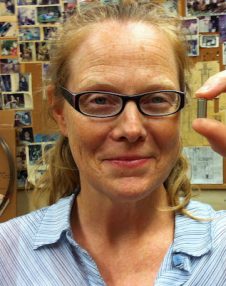 Pamela Ann Speciale
Pamela Ann Speciale
Mechanisms and longevity of strain localization during dynamic recrystallization of olivine
The project, defended in Fall 2019, was supervised by Dr.Whitney M. Behr and Dr. Greg Hirth with additional committee members including Drs. Sharon Mosher, Luc L. Lavier, and Kitty L. Milliken.
Abstract: The mechanisms that lead to localized deformation within Earth’s lithosphere are critical to the formation and longevity of tectonic plate boundaries. Large-scale geodynamic models that incorporate parameters for rheological ‘damage’ and ‘healing’ are most successful at reproducing self-consistent plate-like behavior on Earth and other terrestrial planets, but the microphysical processes that maintain localization are not well understood. While the preservation of fine grain sizes in crustal and mantle shear zones suggests that grain size reduction (damage) by dynamic recrystallization is one of the most important mechanisms of strain localization, subsequent grain growth (healing) may inhibit localization. In this dissertation, I describe three projects focused on evaluating these processes and their contribution to the persistence of plate boundaries. In Chapter 2, I test the consistency of existing stress-grain size piezometers that are used to estimate the strength of the lithosphere. Using quartz–feldspar- and olivine–orthopyroxene-bearing mylonites, which are common mineral pairs in crustal and mantle rocks, I quantify new piezometers for feldspar and orthopyroxene that are consistent with observations from natural rocks, and can be used to estimate stress magnitudes in rocks such as granulites and pyroxenites, for which the quartz and olivine piezometers are unsuitable. In Chapter 3, I quantify the rate of syn- and post-deformation grain growth in experimentally deformed, wet natural olivine aggregates, and compare it to that predicted by the existing olivine grain growth law to highlight the influence of microstructurally stored strain energy on grain growth. I derive a new olivine grain growth law that predicts significantly slower growth than previously reported for wet olivine, suggesting that grain size reduction by dynamic recrystallization plays an important role in the longevity of strain localization. In Chapter 4, I compare the mechanical and microstructural evolution of dry olivine aggregates that I experimentally deformed under both constant strain rate and constant stress conditions, and use detailed microstructural analysis to identify the mechanisms that accommodate strain weakening during and after grain size reduction. The results suggest that strain localization in monophase olivine does not occur at constant strain rate conditions but is common under constant stress boundary conditions.
 John Marshall Swartz
John Marshall Swartz
Channel processes and products in subaerial and submarine environments across the Gulf of Mexico
This project, defended in Fall 2019, was supervised by Dr. David Mohrig and Dr. Sean Gulick with additional committee members including Drs. Jacob Covault, John Goff, Paola Passalacqua, and Daniel Stockli.
Abstract: This dissertation characterizes the geomorphology and associated stratigraphy of channel systems across the northwestern Gulf of Mexico. I focus primarily on fluvial processes and products found within the coastal zone and alluvial plain, and also on a submarine channel network strongly influenced by fluvial behavior. I first use high-resolution bathymetry data combined with academic and industry geophysical data to detail the evolution of a linked shelf-edge delta / slope fan formed by the ancestral Rio Grande in the western Gulf of Mexico. The most recent period of deposition and margin growth was associated with the evolution of a submarine channel network, but one where the uppermost, high-gradient channel segments were strongly depositional and the lower, low-gradient channels with evidence of increasing sediment bypass. Chapter three then examines the controls on drainage network formation within a terrestrial environment, namely the coastal plain from the Rio Grande to the Mississippi delta. I show that floodplain channel network position and geometry is initially controlled by the position of alluvial ridges formed by avulsion of the largest coastal rivers. This provides a new and unique model of how drainage basins evolve in depositional environments. In chapter four I study the morphodynamics of the lower Rio Grande over the last hundred years and illustrate an intermittent river that does not adjust either its channel cross sectional geometry or lateral mobility as it approaches the coast, in contrast to more commonly studied perennial rivers. Finally, the fifth chapter seeks to capture the adjustment of a coastal river to sea-level rise as captured by offshore stratigraphy formed during the Holocene transgression. I provide evidence that the river channel did not simply flood back as commonly proposed but rather shifted from lateral migration to vertical aggradation as it continued to feed delta growth farther downstream. This dissertation provides a variety of studies spanning traditional domains and disciplines and brings together archival historical data, field surveys, and modern aerial and marine geophysical techniques. This work helps illustrate the complex dynamics of depositional environments and provides future research directions for fluvial sedimentology and landscape evolution.
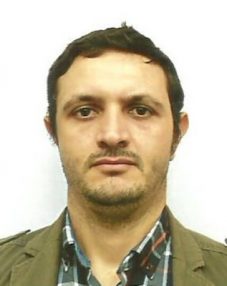 Murat Taner Tamer
Murat Taner Tamer
On step-etching and ambient temperature annealing of apatite fission tracks
This project, defended in Fall 2019, was supervised by Dr. Richard A Ketcham with additional committee members including Drs. Mark Cloos, Daniel Stockli, Raymond Jonckheere, and Andrew J.W. Gleadow.
Abstract: Apatite fission track dating and thermal history inverse modeling is a useful method to reveal and understand the thermal evolution of rocks over geological time scales at temperatures typically ≲ 110 °C. Spontaneous decay of 238U creates fossil tracks in uranium-bearing minerals through the time. The fossil tracks reflect the temperatures they subsequently experience as shortening (called annealing from here on). Tracks must be first etched using a given duration, temperature and etchant molarity, to allow them to be observed under optical microscopes. Through understanding the annealing kinetics and etching characteristics of fossil tracks, the shortening of lengths can be quantitatively interpreted using inverse models. However, since any fossil track may have experienced various temperatures through geological times, the unknown rate of annealing must be benchmarked to a known unannealed proxy. Induced tracks are generated by thermal neutron irradiations of 235U in nuclear reactors. From the moment of registration in the crystal lattice until etching, the induced tracks are exposed only to ambient temperatures, which are generally accepted as unannealed tracks. The annealing and length reduction rates of the induced tracks acquired at laboratory annealing temperature and time scales are extrapolated to geological time scales to estimate the degree of length reduction for a measured mean track length of an unannealed induced track data set that is etched under certain conditions. The extrapolations lie on the assumption that annealing through laboratory and geological time scales and etching properties of induced and fossil tracks are identical. Approaching with a scientific judgement, I have been focusing on the reasoning of conventional experimental procedures and fundamental assumptions. In the three paragraphs below corresponding to three chapters of this dissertation, I explain how the core ideas were produced, why the experiments were carried out, how they were designed and their major results and conclusions. The mean unannealed induced track lengths carry critical importance for fission track thermochronology, as they are proxies that determine the annealing rates of all shortened tracks. Experiencing room temperatures (~21 °C) results in shortening of induced tracks, as reported in previous studies. Track length measurements on induced tracks that are irradiated over ~2 to ~44 years ago, and have been experiencing room temperatures since then, result in gradual decrease (up to ~0.22 µm) of mean track lengths with increasing time over long time scales in three different apatite species. Recent inter-lab calibration studies show that different labs report different track length results from the same samples, even when they use the same etching protocols. We divided our samples into two aliquots and etched them with two most common standard etching protocols (5.0 M HNO3, 20s, 21 °C and 5.5 M HNO3, 20s, 21 °C). Eliminating all other possible experimental and instrumental differences, two analysts measured the exact same track lengths on captured images from both sets of samples with two different etching procedures. The results show that the analysts have less agreement on the tracks length measurements that etched with 5.0 M HNO3 due to their ambiguous track ends, indicating a level of under-etching. The analysts (Murat Tamer at University of Texas at Austin and Ling Chung at University of Melbourne) reject each other’s tracks by ~%14 from 3109 tracks. An additional 5s etching on both of samples show that the increase of 5.0M HNO3 track lengths is much higher than the tracks etched with 5.5M HNO3 protocol, supporting the contention that the former were more likely to be under-etched. Finally a new track etch model is proposed with variable track etching velocities. The finding of ambient-temperature annealing over decadal times led to the idea to improve experimental designs and redo a previous study that monitors ambient-temperature annealing at short time scales, such as etching the tracks right after thermal neutron irradiation from a scale from seconds to months. Improvements included more aliquots of samples, monitored etching procedure quality using a standard protocol, extended data range to as early as 37s through Cf irradiation prior neutron irradiation, and selection of apatite species. These new results are combined with the ambient-temperature annealing results from Chapter 1 and led to interesting discoveries. The tracks anneal at a much faster rate in the early stages of annealing (around up to few weeks) after which the rates decrease to a much slower rate. This indicates two different annealing mechanisms of fission tracks for early and late times. The degree of the annealing rate decrease varies with the apatite species. The laboratory annealing scales of induced tracks are one of the factors that determine the extrapolation quality of induced tracks to the geological time scales. The data of Chapter 1 extends the induced track annealing scales to the ambient-temperatures 21 °C in temperature and to ~44 years. Chapter 2 extended the time scales down to 37s. The new ambient-temperature data set is combined with literature high-temperature annealing data to provide new annealing equations. The extended limits (37s – 32 years in time and 21 °C in temperature) of the annealing window and the combined data set provided an improvement on the annealing equation. The availability of advanced modern fission track measurement instruments such as automatized stage connected to a microscope that is operated by an in-house software and understanding of fundamentals of fission tracks allowed me to study the mean track length increase with increasing etching time for my Master’s thesis at Technische Univesitaet and Bergakademie Freiberg, much of which was later published. The thesis showed that the length increase is a continuous progress along the track length and does not stop at 20s for both fossil and induced tracks, if the length measurements are carried out on the exact same track lengths in each etch step by recording their coordination by a motorized stage operated with software. These results contradicted previous step-etch results and the concept of maximum etchable length and leaves the 20s etching duration of the standard etching protocol in suspicion. With an improved design such as earlier (10s) etching time and data evaluation criteria of the step-etch experiments employed in my master thesis, the study in Chapter 3 contributed the lacking step-etching data of annealed induced tracks to compare with the unannealed induced and fossil track data to see similarities. Through etch-anneal-etch experiments, the bulk etching velocity of tracks are established in the given apatite species and the first quantitative track etch model is established. The results indicate that for both unannealed induced and fossil tracks the current standard etching procedure provides ~1.0 µm lower lengths than the modelled maximum etchable lengths. The other interesting discovery is that if the track etching is monitored from 10s, it reduces the variability of the effective etch times of individual tracks and provides more similar populations of lengths. An earlier start of etching at 10s rather than 20s directly affects the model results as well. In conclusion, the etching duration of 20s causes two major problems by insufficient etching and containing tracks with different populations of track etch times. This leads us to suggest the necessity of a new standard etch model, which can be proposed with some series of future experiments.
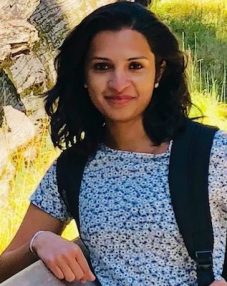 Janaki Vamaraju
Janaki Vamaraju
Cost effective strategies for problems in computational geophysics: seismic modeling and imaging
This project, defended in Fall 2019, was supervised by Dr. Mrinal Sen with committee members including Drs. Mary F. Wheeler, Kyle Spikes, Sergey Fomel, and Jonas D. De Basabe.
Abstract: The first part of my thesis focuses on seismic modeling in fractured media. Several recent developments in finite elements such as usage of high degree polynomials to approximate the wavefield, diagonalization of mass matrices to be inverted through mass lumping techniques and usage of high order time-stepping schemes, have made these methods (along with their classical advantages) more attractive when compared to the finite difference methods (FDM). Discontinuous Galerkin finite element method (DGM) and spectral element method (SEM) have particularly attracted researchers in the field of numerical wave propagation. SEM uses continuous basis functions, which do not allow for discontinuities in the displacement field. Hence it can be used to simulate wave propagation only in non-fractured media. On the other hand, DGM allows for discontinuities in the displacement field to simulate fractures or faults but with a significant increase in computation cost and memory requirement. Here, I formulate and analyze two new, improved finite element techniques (FEM) for the numerical solution of elastic wave propagation in fractured and non-fractured media. Enriched Galerkin (EGM) and hybrid Galerkin (HGM) formulations are proposed for solving elastic wave propagation that has advantages similar to those of DGM but with a computational cost comparable to that of SEM. EGM uses the same bilinear form as DGM, and discontinuous piecewise constants or bilinear functions enrich the continuous Galerkin finite element spaces. EGM satisfies local equilibrium while reducing the degrees of freedom in DGM formulations. HGM employs DGM in areas containing fractures and SEM in regions without fractures. The coupling between the domains at the interfaces is satisfied through interface conditions. The degree of reduction in computation time depends primarily on the density of fractures in the medium. I apply these methods to model wave propagation in 2D/3D fractured media and validate their efficiency with numerical examples. Fractured reservoirs are more complicated due to the presence of fractures and pores. Biot’s fundamental theory on wave propagation in fluid-saturated porous media is still well accepted and forms the basis of this work. To examine the effects of fluid-filled cracks and fractures, I next propose to combine poroelasticity with the linear slip theory for simulating wave propagation in fractured porous media. This study provides an equivalent anisotropic medium model for the description of porous rock with fractures in the seismic frequency band. I solve Biot’s poroelastic wave equations using a velocity-stress staggered grid finite difference algorithm. Through numerical examples, I show that fractures and pores strongly influence wave propagation, induce anisotropy, and poroelastic behavior in wavefields. I also validate the presence of two compressional waves as predicted by Biot’s theory along with the converted waves due to faults. Compared to elastic methods, this approach provides a considerably concise and more accurate model for fractured reservoirs. The second part of my thesis centers on developing cost-effective solutions for seismic migrations and anisotropic moveout corrections. Least-squares migration (LSM) is a linearized inversion problem that iteratively minimizes a misfit functional as a function of the model perturbation. The success of the inversion largely depends on our ability to handle large systems of equations given the massive computation costs. I propose a suite of unsupervised machine learning (ML) approaches that leverage the existing physics-based models and machine learning optimizers to achieve more accurate and cheaper solutions. First, I use a special kind of unsupervised recurrent neural network and its variant, Hopfield neural networks, and the Boltzmann machine, to solve the problems of Kirchhoff and post-stack reverse time migrations. Physics-based forward models can be used to derive the weights and biases of the neural network. The optimal configuration of the neural network after training corresponds to the minimum energy of the network and thus gives the reflectivity solution of the migration problem. I next implement a fast image-domain target-oriented least-squares reverse time migration (LSRTM) workflow using a conjugate Hopfield network. The method computes a low-cost target-oriented Hessian matrix using plane-wave Green’s functions. I recover a more accurate image in the presence of a truncated Hessian matrix. I further implement pre-stack LSRTM in a deep learning framework and adopt various machine learning optimizers to achieve more accurate and cheaper solutions than conventional methods. Using a time-domain formulation, I show that mini-batch gradients can reduce the computation cost by using a subset of total shots for each iteration. Mini-batches not only reduce source cross-talk but are also less memory intensive. Combining mini-batch gradients with Adam optimizer and Huber loss function can improve the efficiency of pre-stack LSRTM. I demonstrate high accuracy predictions on complex synthetic models that can generate noisy data. Finally, I develop a Hough transform neural network based technique for normal moveout correction in vertically transverse isotropic (VTI) media. This technique offers advantages when compared to the time and computational costs required in a conventional anisotropic normal moveout correction. Using a Hough transform based neural network, I simultaneously fit all the non-hyperbolic reflection moveout curves using intermediate to long offsets. I apply the network to synthetic VTI datasets and demonstrate the practical feasibility of anisotropic moveout correction that is independent of travel-time picking and velocity analysis.
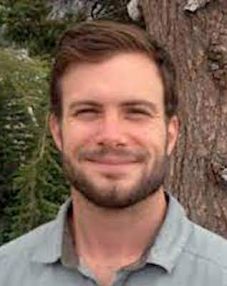 Stephen Bruce Ferencz
Stephen Bruce Ferencz
Surface water-groundwater exchanges under conditions of daily river stage fluctuations : implications for fluid, solute, and heat dynamics in dam regulated river cooridors
The project, defended in Spring 2020, was supervised by Dr. Meinhard B Cardenas with committee members including Drs. Bethany Neilson, Daniella Rempe and Philip Bennett.
Abstract: The damming of rivers has resulted in multitude of environmental impacts to river ecosystems. The focus of this dissertation is to assess how dams used for hydroelectric power generation influence surface water-groundwater exchange. The exchange of surface water with groundwater has been demonstrated to be an important mechanism regulating nutrient dynamics in rivers. Hydroelectric dams are often “hydropeaked,” which is when discharge from the dam is increased/decreased in accordance with daily patterns of electricity demand. This creates high frequency river stage fluctuations that enhance the connectivity between rivers and groundwater. The central theme explored throughout this dissertation is how hydropeaking effects the movement of water, dissolved solutes, and heat between rivers and their sediments. Much of the research presented in this dissertation uses numerical models to explore how properties of the river (stage, chemistry, temperature) and subsurface (hydraulic conductivity, groundwater levels) control exchanges of fluid, heat, and solutes, and characterizing how those fluxes alter the chemistry and temperature of sediments near the river. Two of the studies are entirely modeling-based, focusing on the lateral exchanges of fluid and solutes between rivers and their riparian aquifers caused by hydropeaking. The results provide insight into how dam release and subsurface properties influence surface water-groundwater exchange and also the distance downstream from a dam that exchanges occur over. Other key findings relate to how hydraulic conductivity and groundwater flow conditions of the riparian aquifer control fluid and solute exchange, how far river-sourced solutes propagate into the riparian zone, and factors influencing aerobic respiration in the banks of hydropeaked rivers. In another study, field observations of riverbed temperatures from a hydropeaked river are combined with flow and heat transport modeling. The results demonstrate that hydropeaking releases can strongly influence the temperature of the riverbed near the river bank, but not over the majority of the channel. A final study uses temperature observations from hundreds of rivers across the United States to characterize the mean daily temperature and daily temperature range in different ecoregions. The results from this assessment demonstrate how the thermal regimes of rivers near dams have been altered.
 Suyu Fu
Suyu Fu
Experimental constraints on the chemical and physical states of Earth’s lower mantle
The project, defended in Spring 2020, was supervised by Dr. Jung-Fu Lin with committee members including Drs. Stephen P. Grand, Nicola Tisato, Yaguo Wang, and Luc L. Lavier.
Abstract: Earth’s lower mantle is the most voluminous layer of our planet, extending from approximately 670 to 2900 km in depth. However, there are still plenty of enigmatic phenomena in the region from geochemical, seismological, and geodynamic observations, such as the lower-mantle mineralogy and temperature, seismic anisotropy, origin of ultra-low velocity zones (ULVZs), and water reservoir. In this dissertation, I used diamond anvil cells (DACs) coupled with laser and X-ray spectroscopic techniques, such as Brillouin light scattering, impulsive stimulated light scattering, and X-ray diffraction, to experimentally measure properties of candidate lower-mantle minerals under relevant pressure and temperature (P-T) conditions, including sound velocity, density, melting behavior, and water solubility. These results were applied to better understand these aforementioned scientific enigmas on the lower-mantle chemistry and physics. Bridgmanite [(Mg,Fe,Al),(Fe,Al,Si)O3] and ferropericlase [(Mg,Fe)O] are the two most abundant minerals in the lower mantle. Investigating effects of Fe and Al substitution as well as Fe spin crossover on their elastic properties and melting behavior is of particular importance to our unraveling the physical signature and dynamic history of Earth’s deep interior. Here, I measured sound velocity, density, and single-crystal elasticity of bridgmanite at high pressure and room temperature. Based on results on polycrystalline Fe- and (Al,Fe)-bearing bridgmanite, I quantitatively evaluated Fe and Al effects on its high-pressure elasticity. By comparing mineral physics models on the velocity and density of candidate mienrals with one-dimensional seismic profile, my results yield an internally consistent lower-mantle mineralogy and adiabatic goetherm. In addition, the elastic anisotropy of deformed bridgmanite under relevant P-T and stress conditions could plausibly explain seismically-observed shear wave radial anisotropy at the topmost lower mantle near subducted slabs. Furthermore, I conducted high P-T melting experiments on ferropericlase up to ~120 GPa and ~5400 K in laser-heated DACs across the spin crossover. Results show that the existence of dense iron-rich low-spin residual (Mg,Fe)O melt over geodynamic evolution could produce characteristic seismic signatures of ULVZs at the lowermost mantle. Abundant water could be transported to Earth’s deep interior via subduction and dehydration processes, however, water reservoir in the lower mantle is still poorly constrained due to limited and inconclusive literuature studies on water solubities in candidate minerals. High-quality single-crystal (Al,Fe)-bearing bridgmanite were grown from hydrous melt in a Kawai-type apparatus. Reliable measurements on its water concentration show as high as ~1020(±70) ppm wt water in the structure. The high water solubity in bridgmanite can greatly affect our understanding of lower-mantle geophysics, such as a deep-mantle water reservoir and dehydration melting at the topmost lower mantle.
 Allison Lawman
Allison Lawman
Reconstructing past changes in El Niño-Southern Oscillation variability using geochemical proxies from corals
The project, defended in Spring 2020, was supervised by Dr. Terrence Quinn and Dr. Judson Partin with committee members including Drs. Timothy Shanahan, Rowan Martindale and Pedro Di Nezio.
Abstract: The El Niño-Southern Oscillation (ENSO) is the leading mode of interannual (>1-9 year) climate variability and has far-reaching impacts on global temperature and rainfall patterns. That said, the instrumental record of ENSO does not have the temporal coverage necessary to characterize the full range of natural variability. Uncertainties about how ENSO variability may change in the future with anthropogenic warming motivates the study of past climate conditions when the Earth experienced different climate conditions compared to the warm, rapidly changing climate of today. Climate scientists use two primary tools to study past climate. First, general circulation models use mathematical equations based on physical principles to simulate different aspects of the climate system, including the ocean, atmosphere, land, and ice sheets. Second, various geological archives like corals, cave stalagmites and lake and ocean sediment also provide clues about how the climate varied in the past. The paleoclimate proxy records generated from geological archives thus provide independent validation of paleoclimate model simulations. Geochemical proxy records from corals are particularly well-suited for investigating past (paleo) ENSO variability as corals can provide decades to hundreds of years of climate information from the tropics at sub-annual resolution. This dissertation seeks to quantify changes in paleo-ENSO variability using geochemical proxies from corals. I first generate replicated coral records from Vanuatu in the southwest Pacific to investigate the range of ENSO variability during the 20th century and ~900 years during a time interval called the Medieval Climate Anomaly. The paleo-temperature records are based on the ratio of strontium to calcium (Sr/Ca) of massive Porites corals from Vanuatu. Next, I develop various computational algorithms to investigate how different uncertainties inherent to the coral archive impact the ability of a coral to capture changes in ENSO variability. The algorithms incorporate the impact of variable growth rates, analytical and calibration errors, and age model assumptions, and are collectively referred to a coral proxy system model (PSM). The utility of the coral PSM is demonstrated using unforced climate model output for the last millennium. I then use the PSM and apply the analytical techniques developed in the first two projects to investigate simulated and coral proxy-inferred changes in paleo-ENSO variability during the Holocene (11.65 thousand years ago to the present). The resulting model-data comparison provides a new perspective on long-term changes in ENSO variability.
 Li Liu
Li Liu
Sediment provenance and delivery in the Late Paleozoic Alleghanian-Ouchita-Marathon foreland mixed systems
The project, defended in Spring 2020, was supervised by Dr. William Fisher and Dr. William Ambrose with additional committee members including Drs. Herbert Scott Hamlin, Daniel F. Stockli, and David Mohrig
Abstract: The continental-continental collision of Gondwana and Laurentia during the Paleozoic produced a tectonic transition from a rift to a foreland system. Late Paleozoic foreland basins, characterized by mixed carbonate and siliciclastic deposits along the Alleghanian-Ouachita-Marathon orogenic belts, became hydrocarbon-rich basins. Understanding the provenance and sediment delivery of those basins provided insights in both frontier basin exploration and mature basin exploitation. In this study, provenance and sediment-delivery studies were conducted in the Appalachian Foreland Basin, Black Warrior Basin, Fort Worth Bain, Bravo Dome, and most importantly, the Permian Basin. Detrital zircon data in syn-orogenic clastic wedges of Alleghanian-Ouachita-Marathon foreland show that for similar Grenvillian detrital zircon core ages, rims in the Appalachian foreland basin mainly have ages of 350 to 490 million years (Ma), whereas rims in Texas basins have ages of 500 to 750 Ma. This result resolves the ambiguity of regarding similar U-Pb ages of different basement and has implications for recycling and paleo-drainage reconstruction. Detailed investigation of provenance in lower Permian sediment of Permian Basin and Bravo Dome reveals that sediments were mainly derived from basement in peri-Gondwana and Gondwana terranes in Mexico and Central America. Sediments were directly derived from Ouachita orogenic belt and delivered by both short-distance axial and transverse drainage systems. Based on core and rim age assemblages, it is inferred that the transcontinental fluvial system with headwater from Appalachians did not reach as far as Texas basins during Wolfcampian time. Leonardian sediment were delivered with northwest direction by fluvial system originated from Ouachita-Marathon orogen and then recycled from Texas Panhandle and eastern New Mexico southward by eolian processes in the terrestrial setting. Leonardian siliciclastic-rich large-scale basin floor fans formed important unconventional reservoirs dominated by channel-level and lobe complexes in the Permian Basin. Shelf-incising submarine canyons are the primary shelf-to-basin delivery system that provided basinal sand. Realizing the important of canyon-fed systems in this hydrocarbon-rich basin will have significant impact on sediment-flux estimation and global source-to-sink studies of mixed systems.
 Yunzhi Shi
Yunzhi Shi
Deep learning empowers the next generation of seismic interpretation
The project, defended in Spring 2020, was supervised by Dr. Sergey B Fomel with additional committee members including Drs. Mrinal K. Sen, Omar Ghattas, Philipp Krahenbuhl, and Hongliu Zeng.
Abstract: With the ever developing data acquisition techniques, seismic processing deals with massive amount of high quality 3-D data with greater pressure to interpret the data more efficiently. Currently, seismic interpretation such as fault analysis and salt detection is a tedious, manual, and time-consuming process. Modern interpretive tools still rely on interpreter while only utilizing the data qualitatively as a backdrop or indirect guide. Therefore, the seismic analysis iterations could take multiple months with human expertise. The advancements in computer technology creates opportunities to develop automated tools for seismic interpretation that only a few years ago would have been prohibitively expensive. In this dissertation, I address the problem by investigating efficient seismic interpretation tools, designing related algorithms, and show the feasibility and effectiveness of applying them to various demanding interpretation problems on 2D/3D datasets. The tools are based on deep neural networks and employ convolutional layers to achieve artificial visual understanding of the datasets. First, I formulate salt detection as an image segmentation problem and develop a CNN to solve this problem with high efficiency and accuracy. CNNs with encoder-decoder architecture and skip-connections allows for extracting essential information from training data, thus results in high accuracy and great generalization across different type of datasets. Further extending from the segmentation end-to-end network framework, I introduce a recurrent style network for tracking irregular geobodies. The improvement is two-fold: the tracking algorithm allows for instance separation during segmentation, and the atomic design allows for more interaction on the user side to control the model application on various datasets. Apart from these supervised learning frameworks, I found that unsupervised learning provides even more powerful tools in other interpretation tasks. In the following chapter, I investigate the possibility to exploit the deep CNN architecture itself as a model parameterization method and perform image enhancing tasks. The deep network is optimized iteratively and can constrain the space of solutions to admissible models. Inspired by automatic recommendation system, in the next chapter, I propose a network that transforms seismic waveforms into a latent space in which they are aligned by similarities. Waveforms that belong to the same horizon, which are more similar to each other, can be extracted from the latent space more easily. In the last chapter, I propose a network architecture, plane-wave neural networks (PWNN), combining plane-wave destruction (PWD) filters and CNN into a single architecture. CNN can extract nonlinear features from spatial information, however, lacks the ability to understand spectral information. On the other hand, PWD filter, a local plane-wave model tailored specifically for representing seismic data, is effective to extract signals aligned along dominant seismic events. Finally, I discuss known limitations and suggest possible future research topics.
 Gabriel Tagliaro
Gabriel Tagliaro
Neogene paleoceanography of Western Australia : rivers, winds, ocean currents and latitudinal controls over sedimentation
The project, defended in Spring 2020, was supervised by Dr. Craig S Fulthorpe and Dr. Luc Lavier with additional committee members including Drs. Xavier Janson, Sean Gulick, and David Watkins.
Abstract: During the Neogene period, between 23 and 2.58 million years ago, dramatic changes in tectonic and climatic patterns affected ocean currents, sea level, and sedimentation on the continents and in the oceans. A global warm period in the early Miocene ended when ice-sheet expansion on the Antarctic continent lowered global temperatures in the middle and late Miocene. Global temperatures rebounded during the Pliocene, succeeded by a return to cooling conditions in the Pleistocene. These Neogene climatic events are important because they represent some of the best past analogues to modern and future climate change. The study of Neogene sedimentary archives therefore constitutes a research opportunity to elucidate the effects that warming climates will have on Earth’s oceans and atmosphere. The Australian continent was particularly affected by the Neogene reorganization of climate and tectonics as the northward movement of the Australian plate shifted the continent to warmer sub-tropical climates. This work reconstructs the paleoceanography and paleoclimate evolution of the Western Australian margin during the Neogene, based on detailed examination of sedimentary archives drilled by the International Ocean Discovery Program (IODP) between 2015 and 2017. Together, these cores form a latitudinal transect of Western Australia and represent the most complete Neogene stratigraphic record in the Southeast Indian Ocean. Results indicate that sedimentation patterns in both shallow and deep-water areas adapted to the displacement of the continent towards lower latitudes and were highly vulnerable to changes in Antarctic climate throughout the period. Biological productivity and aeolian input increased in the Subantarctic Ocean during the early Miocene warming as the Southern Westerlies amplified under warmer temperatures (Chapter 3). In the late Miocene, the continued opening of the Southern Ocean and the transition to colder Antarctic temperatures was accompanied by intensification of deep ocean circulation that formed extensive contourite drifts and ferromanganese crusts in the deep sea (Chapter 4). On the Northwest Shelf, a middle Miocene arid sabkha environment transitioned to a humid environment that accompanied early Pliocene warming, forming a perennial deltaic environment resulting from the southward displacement of Intertropical Convergence Zone towards northern Australia (Chapter 2). The data and interpretations presented in this dissertation shed light on the environmental impacts of changing temperatures on continental margins and on paleoenvironmental sensitivity to atmospheric CO2 forcing.
 David Guo Tang
David Guo Tang
Methods for analysis in digital images of sedimentary rocks
The project, defended in Spring 2020, was supervised by Dr. Kyle T Spikes with additional committee members including Drs. Sergey B. Fomel, Mrinal K. Sen, Hugh C. Daigle, and Zoya Heidari.
Abstract: This dissertation focuses on the use of digital images to analyze sedimentary rocks. While digital images can provide important insight into a rock, the analysis of such images can be extremely time consuming. To address this problem, I explore various methods for the automation of this process. The utility of these segmented images are then demonstrated across different disciplines in geoscience. In the first study, I explore the use of traditional image processing methods to analyze a thin section for sedimentology purposes. A marker-based watershed approach incorporating both a distance and gradient map is used to identify individual grains. The algorithm is then used to measure the spatial distribution of grain size within a Permian Basin reservoir. The second study utilizes a neural network for identifying six different mineral types in a scanning electron microscope image of a shale. After assigning physical properties to each pixel, a digital rock physics experiment using finite elements is used to simulate a laboratory experiment for the estimation of elastic properties. The final study focuses on the automation of point counting in a thin section for petrography. A convolutional neural network utilizing both plane- and cross-polarized light images is used to identify the percentages of each grain type across an image. The results are comparable with a manual point count. As the amount of data collected becomes increasingly large, the automation of image analysis using the methods proposed here will allow for future users to feasibly work with such data sets.
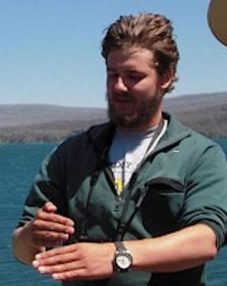 Kelly David Thomson
Kelly David Thomson
Downstream transmission and modification of detrital zircon provenance signatures in ancient and modern sediment routing systems
The project, defended in Spring 2020, was supervised by Dr. Daniel Stockli
Abstract: To be added
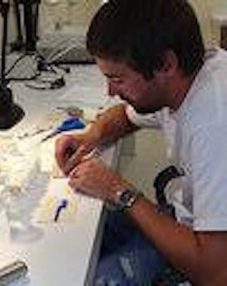 Charles Withnell
Charles Withnell
A new perspective on the systematics and paleobiogeography of arvicoline rodents and the first radiometric age of the fauna from Cumberland Bone Cave, Maryland
The project, defended in Spring 2020, was supervised by Dr. Chriistopher Bell with additional committee members including Drs. Rowan Martindale, Timothy Rowe, David Cannatella, and Christopher N. Jass.
Abstract: Arvicoline rodents (voles, lemmings, and muskrats) are important taxa for characterizing and defining the North American Land Mammal Ages (NALMAs) of the Pliocene and Pleistocene. They are the basis for finer-scale temporal and spatial resolution and have been used to generate the divisions of the Blancan and Irvingtonian NALMAs. The profuse fossil record of arvicolines has never been reconciled with modern phylogenetic techniques, because the fossil record is almost exclusively isolated teeth or tooth-bearing elements. Here I present the most taxonomically robust (n=134) and genetically well sampled (n=5 genes) molecular phylogeny of arvicoline rodents. I used Parsimony, Maximum Likelihood, and Bayesian Inference methodologies to explore the systematic relationships of the clade. Seven fossil calibrations were used to place a series of temporal constraints on the tree to generate the first time-calibrated phylogeny of arvicoline rodents and I found that the clade originated in the Miocene at 6.5 Ma. This hypothesis was subsequently used to model speciation rates, and the patterns of paleobiogeography of the group in the R program BioGeoBEARS. I hypothesize that arvicoline rodents originated in Asia and that dispersal was asymmetric from west (Asia) to east (North America) with at least nine dispersal events between the two continents. My data indicate an origination of Lemmiscus at 5 Ma and the origination of the Synaptomys clade at 3.8 Ma, which supports previously problematic reports of both taxa from Hagerman, ID. This leaves the Blancan V division (as previously defined by the immigration of Synaptomys at 2.5 Ma) undefined and this leaves the Blancan undifferentiated from 4. Ma to the start of the Irvingtonian at 1.9 Ma. This is a novel approach of reconciling biochronology and probabilistic paleobiogeography. I also obtained the first radiometric age of the fauna of Cumberland Bone Cave using a combined Uranium Series and Electron Spin Resonance (ESR) approach, the first date of a middle Pleistocene site in Northeastern North America. Results indicate an age of the fauna of 756 +87/-98 ka which provides an important temporal anchor point from which to begin to understand the faunal dynamics of the region during the Pleistocene.
 Thomas Etzel
Thomas Etzel
Garnet chemical zoning thermobarometry: method evaluation and application in the Menderes Massif, Western Turkey
The project, defended in 2020, was supervised by Dr. Elizabeth Catlos.
Abstract: To be added
 Lingcheng Li
Lingcheng Li
Multi-scale understanding and modeling of plant hydraulics
The project, defended in 2020, was supervised by Dr. Zong–Liang Yang and Dr. Ashley Michelle Matheny with additional committee members including Drs. Bridget R.Scanlon, Meinhard Bayani Cardenas, and Jiafu Mao.
Abstract: Plant hydraulics describes the mechanisms of water uptake from the soil to roots, water transport through the xylem to leaves, and water loss via stomata. Mechanistic modeling of plant hydraulics has advanced in recent decades with a demonstrated capability to simulate evapotranspiration and gross primary production, especially under water stress conditions. As these water stress conditions are expected to intensify in a warming climate, it is important to ensure land surface models (LSMs) for use in Earth system models (ESMs) are equipped with appropriate parameterizations of plant hydraulics. Most LSMs employ an idealized “big-leaf” concept to regulate water and carbon fluxes in response to soil moisture stress through empirical soil hydraulics schemes (SHSs). Such schemes have been shown to cause significant uncertainties in water and carbon simulations. This dissertation aims to better understand and simulate the role of plant hydraulics in regulating the terrestrial water and carbon cycles through observational data analysis, numerical model development, and continental-scale applications. Chapter 2 analyzes the impacts of plant hydraulics-related properties on the sensitivity of vegetation interannual variability to hydroclimatic factors such as precipitation and atmospheric water vapor pressure deficit (VPD) in North America. Compared to isohydric plants, anisohydric plants are more negatively affected by VPD and would suffer more from increasing atmospheric moisture stress under climate change. Focusing on the Noah-MP land surface model, Chapter 3 presents a novel plant hydraulics scheme (PHS) (hereafter referred to as Noah-MP-PHS), which employs a big-tree concept by considering the whole-plant hydraulic strategy. Noah-MP-PHS is evaluated using plot-level observations from UMBS, and improves water and carbon simulations, especially during dry soil conditions. Noah-MP-PHS can reproduce contrasting plant hydraulic behaviors for two species, i.e., isohydric ‘risk averse’ red maple and anisohydric ‘risk prone’ red oak. The stem water storage in PHS enables nocturnal plant water recharge and provides an important buffer to relieve xylem hydraulic stress during dry soil conditions. Chapter 4 extends the plot-level and tree-level PHS experiments to the forest regions in the continental United States (CONUS). Six experiments are conducted, including three SHS experiments and three PHS experiments. PHS_plot, PHS risk-averse, and risk-prone experiments use calibrated PHS parameters, respectively, from the plot-level, maple tree-level, and oak tree-level simulations as described in Chapter 3. The spatial sapwood area and volume indexes over the CONUS forest regions are calculated for the first time for use in land surface modeling. PHS impacts the ET partitioning to transpiration and the total water storage anomaly over the CONUS. Plant hydraulic traits play an essential role in PHS water simulations. Therefore, the implementation of plant hydraulics, along with more realistic representations of plant traits and hydraulic strategies, could reconcile observations and models of terrestrial water cycles. Noah-MP-PHS provides a useful platform to better understand the roles of terrestrial ecosystems on global carbon and water cycles and energy budget, including research of data assimilation, land-atmosphere interaction, extreme event prediction, climate projection, and so on.
 Chelsea Mackaman-Lofland
Chelsea Mackaman-Lofland
Andean deformation and basin evolution during changes in subduction zone geometry (29-33 °S)
The project, defended in 2020, was supervised by Dr. Brian Horton.
Abstract: To be added
Peter Nelson
Seismic imaging of deep mantle plumes and inner-outer core boundary heterogeneity using core waves
The project, defended in 2020, was supervised by Dr. Stephen Grand with additional committee members including Drs. Jung–Fu Lin, Thorsten Becker, Mrinal Sen, and Edward Garnero.
Abstract: The large contrast of physical properties across the core-mantle boundary (CMB) results in complicated seismic raypaths that can be used to study the deep earth. In this dissertation, I use core waves to address two controversial topics in earth science: the existence of deep thermal mantle plumes and lateral heterogeneity at the base of the outer core. First, I test the plume hypothesis by using SKS and SKKS travel times to construct a shear wave tomography model for the mantle beneath the Yellowstone Hotspot in western North America. The model is optimized to find short wavelength, subvertical structures in the lower mantle. I chose the Yellowstone Hotspot over other more prominent hotspots because it is the only hotspot with a purported deep origin that is located in a continental interior with seismic networks dense enough to image a thin mantle plume in the lower mantle. The shear wave tomography model for the deep mantle beneath the western United States that I present is constructed using the travel times of SKS and SKKS recorded by the dense USArray seismic network. SKS and SKKS are more sensitive to lower mantle plumes than other phases traditionally used for mantle tomography because of their subvertical raypaths in the lower mantle. The model has a single narrow, cylindrically shaped slow anomaly, approximately 350 km in diameter that I interpret as a whole-mantle plume. The anomaly is tilted to the northeast and extends from the CMB to the surficial position of the Yellowstone Hotspot. The structure gradually decreases in strength from the deepest mantle towards the surface. If it is a purely thermal anomaly the peak velocity anomaly at the base implies an initial excess temperature between 650 to 850 °C. These results strongly support a deep origin for the Yellowstone hotspot and provide evidence for the existence of thin thermal mantle plumes that are currently beyond the resolution of global tomography models. I next use PKP to investigate the seismic structure around the inner-outer core boundary (ICB). A zone with reduced P-velocity gradient at the bottom of the outer core, known as the F-layer, has been reported by seismological studies and incorporated into some global 1-D Earth models. However, not all studies have found such a feature, particularly beneath the eastern hemisphere. Most seismic studies have used differential travel time measurements between single pairs of PKP waves to study the ICB, but such studies result in tradeoffs between outer and inner core structure leading to ambiguous conclusions about the F-layer. Here I minimize that tradeoff by simultaneously waveform modelling all branches of PKP for two different datasets, one sampling the eastern hemisphere and another sampling the western hemisphere. The datasets clearly show all PKP waves and were made by stacking seismograms from events with high signal to noise ratios recorded at dense networks in China and Japan. I use a stochastic waveform inversion method to determine a 1D seismic model for each hemisphere that fits the data. For the eastern hemisphere, my best fitting model has a thin 60-100 km thick high velocity lid at the top of the inner core and no anomalous gradient in the F-layer. The origin of the high velocity lid is unclear, but likely causes are abrupt change in anisotropy, an enrichment in light elements, or a thermal boundary layer if the inner core has a low thermal conductivity. Further tests also show that a reduced velocity gradient in the F-layer cannot simultaneously fit all the PKP arrivals. In contrast, my best fitting model for the western hemisphere has a reduced velocity gradient in the F-layer and a thick low velocity zone beneath the ICB that is most likely caused by seismic anisotropy. These two results suggest that the F-layer is laterally The large contrast of physical properties across the core-mantle boundary (CMB) results in complicated seismic raypaths that can be used to study the deep earth. In this dissertation, I use core waves to address two controversial topics in earth science: the existence of deep thermal mantle plumes and lateral heterogeneity at the base of the outer core. First, I test the plume hypothesis by using SKS and SKKS travel times to construct a shear wave tomography model for the mantle beneath the Yellowstone Hotspot in western North America. The model is optimized to find short wavelength, subvertical structures in the lower mantle. I chose the Yellowstone Hotspot over other more prominent hotspots because it is the only hotspot with a purported deep origin that is located in a continental interior with seismic networks dense enough to image a thin mantle plume in the lower mantle. The shear wave tomography model for the deep mantle beneath the western United States that I present is constructed using the travel times of SKS and SKKS recorded by the dense USArray seismic network. SKS and SKKS are more sensitive to lower mantle plumes than other phases traditionally used for mantle tomography because of their subvertical raypaths in the lower mantle. The model has a single narrow, cylindrically shaped slow anomaly, approximately 350 km in diameter that I interpret as a whole-mantle plume. The anomaly is tilted to the northeast and extends from the CMB to the surficial position of the Yellowstone Hotspot. The structure gradually decreases in strength from the deepest mantle towards the surface. If it is a purely thermal anomaly the peak velocity anomaly at the base implies an initial excess temperature between 650 to 850 °C. These results strongly support a deep origin for the Yellowstone hotspot and provide evidence for the existence of thin thermal mantle plumes that are currently beyond the resolution of global tomography models. I next use PKP to investigate the seismic structure around the inner-outer core boundary (ICB). A zone with reduced P-velocity gradient at the bottom of the outer core, known as the F-layer, has been reported by seismological studies and incorporated into some global 1-D Earth models. However, not all studies have found such a feature, particularly beneath the eastern hemisphere. Most seismic studies have used differential travel time measurements between single pairs of PKP waves to study the ICB, but such studies result in tradeoffs between outer and inner core structure leading to ambiguous conclusions about the F-layer. Here I minimize that tradeoff by simultaneously waveform modelling all branches of PKP for two different datasets, one sampling the eastern hemisphere and another sampling the western hemisphere. The datasets clearly show all PKP waves and were made by stacking seismograms from events with high signal to noise ratios recorded at dense networks in China and Japan. I use a stochastic waveform inversion method to determine a 1D seismic model for each hemisphere that fits the data. For the eastern hemisphere, my best fitting model has a thin 60-100 km thick high velocity lid at the top of the inner core and no anomalous gradient in the F-layer. The origin of the high velocity lid is unclear, but likely causes are abrupt change in anisotropy, an enrichment in light elements, or a thermal boundary layer if the inner core has a low thermal conductivity. Further tests also show that a reduced velocity gradient in the F-layer cannot simultaneously fit all the PKP arrivals. In contrast, my best fitting model for the western hemisphere has a reduced velocity gradient in the F-layer and a thick low velocity zone beneath the ICB that is most likely caused by seismic anisotropy. These two results suggest that the F-layer is laterally heterogeneous which has important implications for core dynamics such as the possibility of an increase in viscosity with depth in the outer core.
 Xian Wu
Xian Wu
Duration of El Nino and La Nina events: mechanisms and multiyear predictability
The project, defended in 2020, was supervised by Dr. Yuko M. Okumura with additional committee members including Pedro N. DiNezio, Terrence M. Quinn, Patrick Heimbach, and Kerry H. Cook.
Abstract: El Niño-Southern Oscillation (ENSO) is the dominant mode of interannual climate variability and affects global weather patterns via atmospheric teleconnections. Both warm (El Niño) and cold (La Niña) phases of the ENSO usually begin in boreal spring-summer and peak near the end of the calendar year. About two-thirds of El Niño and half of La Niña events terminate in the following year, but other events persist for another year or longer, prolonging the climate impacts. These long-lasting ENSO events, however, are not predicted in the current operational ENSO forecasts, which are generally limited to 12 months. This study investigates the mechanisms controlling the diverse duration of ENSO events and its multiyear predictability. Analyses of observational data and the Community Earth System Model, version 1 (CESM1), show that the leading factor controlling the event duration is the onset timing for El Niño and the amplitude of preceding warm event for La Niña. El Niño events developing in boreal spring-summer usually terminate after the peak due to early arrival of delayed negative oceanic feedback and fast adjustments of the tropical Atlantic and Indian Oceans to the tropical Pacific warming, whereas those developing after summer tend to last for an additional year. La Niña events preceded by a strong warm event usually persist into the second year because of large initial discharge of the equatorial oceanic heat content and delayed interbasin adjustments. Variability external to ENSO dynamics also contributes to the diversity of event duration. Motivated by previous modeling studies that show potential predictability of multiyear La Niña events preceded by a strong warm event, the predictability of El Niño duration is tested through idealized CESM1 experiments. The model successfully predicts the duration of El Niño events when initialized with oceanic conditions in the onset months. The predictability is attributed to the timing of delayed negative oceanic feedback and interbasin adjustments, in agreement with the diagnostic analyses. To further explore the predictability of ENSO event duration in the real world, we conduct multiyear ensemble CESM1 forecasts initialized with observed oceanic conditions on March 1, June 1, and November 1 of each year during 1954–2015. The CESM1 shows high prediction skills of event duration with lead times ranging from 6 to 25 months. The predictability of event duration arises from initial thermocline depth anomalies in the equatorial Pacific, as well as sea surface temperature anomalies within and outside the tropical Pacific. The forecast error growth of event duration, on the other hand, originates mainly from atmospheric variability over the North Pacific in boreal winter. The high predictability of event duration indicates the potential for extending the operational ENSO forecasts for up to two years.
Compiled by Kristin Phillips, Department of Geological Sciences